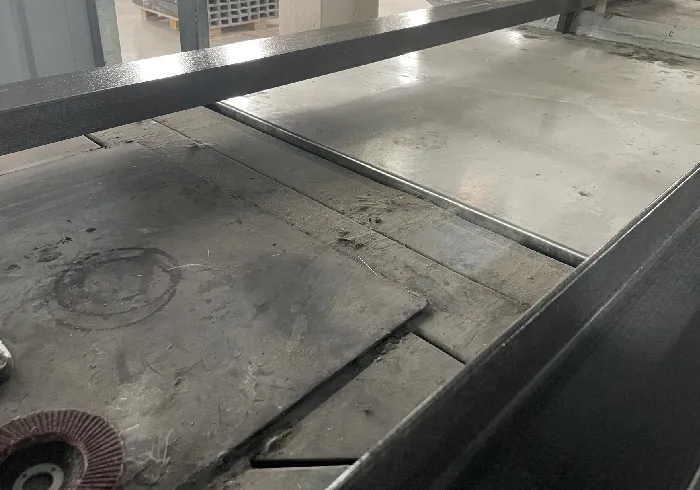loading...
- No. 9, Xingyuan South Street, Dongwaihuan Road, Zaoqiang County, Hengshui, Hebei, China
- admin@zjcomposites.com
- +86 15097380338
- Welcome to visit our website!
waste water treatment equipment
Waste Water Treatment Equipment Essential Technologies for a Sustainable Future
Wastewater treatment is a crucial process that aims to remove contaminants from sewage and industrial effluents to protect the health of ecosystems and human populations. The equipment involved in this process is varied and sophisticated, enabling the effective management of wastewater to meet environmental regulations and promote sustainability. This article will explore the types of wastewater treatment equipment, their functionality, and the importance of investing in advanced technologies.
Types of Wastewater Treatment Equipment
1. Preliminary Treatment Equipment
Preliminary treatment is the first step in the wastewater treatment process, primarily designed to remove large solids and debris that can damage subsequent equipment. This phase often includes
- Screens These are used to filter out large particles such as sticks, leaves, and plastics from the wastewater. They can be manually cleaned or automated with mechanical systems. - Grit Chambers Grit chambers allow heavy particles, like sand and gravel, to settle to the bottom, preventing abrasion and wear on pumps and other equipment downstream.
2. Primary Treatment Equipment
Following preliminary treatment, primary treatment focuses on the physical removal of settleable and floatable materials. Key equipment includes
- Clarifiers Primary clarifiers are large tanks where suspended solids can settle under the influence of gravity. The settled sludge is removed for further processing, while clearer water flows to the next stage.
- Dissolved Air Flotation (DAF) Systems These systems use air bubbles to float suspended solids to the surface, where they can be skimmed off. DAF is particularly effective for removing oils, grease, and other light contaminants.
3. Secondary Treatment Equipment
Secondary treatment targets dissolved and colloidal organic matter, often involving biological processes to enhance the breakdown of pollutants
. This stage includes- Aeration Tanks These tanks provide oxygen to microorganisms, which digest organic matter. Aeration can be done through mechanical means or diffused air systems.
waste water treatment equipment

- Bioreactors Advanced bioreactor designs, like Membrane Bioreactors (MBRs) and Sequencing Batch Reactors (SBRs), allow for more efficient breakdown of pollutants and improved separation of solids and liquids.
4. Tertiary Treatment Equipment
Tertiary treatment is designed to further polish the effluent and eliminate residual contaminants. Essential equipment includes
- Filtration Systems Sand filters and advanced membrane technologies can remove remaining solids and microorganisms.
- Disinfection Systems Ultraviolet (UV) light and chlorination are common disinfection methods to eliminate pathogens before the treated water is released into the environment or reused.
The Importance of Wastewater Treatment Equipment
Investing in state-of-the-art wastewater treatment equipment is not only essential for compliance with environmental regulations but also crucial for promoting sustainability. Effective wastewater management protects water resources, conserves energy, and reduces pollution, contributing to overall public health.
One significant benefit of modern wastewater treatment systems is their ability to treat and recycle water for reuse. Treated wastewater can be repurposed for irrigation, industrial processes, and even potable water supply in water-scarce regions. This circular approach to water management supports environmental stewardship and helps combat water shortages.
Moreover, advanced technologies in wastewater treatment, such as smart sensors and data analytics, enhance operational efficiency by monitoring system performance in real-time. These innovations allow for proactive maintenance, reduce operational costs, and minimize energy consumption.
Conclusion
The deployment of effective wastewater treatment equipment is a cornerstone of sustainable development. As global populations grow and industrial activities expand, the demand for high-quality wastewater treatment will only increase. Policymakers, industry leaders, and engineers must work collaboratively to implement innovative technologies that not only meet regulatory requirements but also serve as a foundation for a cleaner, healthier world.
In conclusion, the evolution of wastewater treatment equipment reflects the growing recognition of water as a finite and vital resource. By investing in these technologies, societies can not only safeguard public health and the environment but also ensure the longevity of our precious water resources for future generations.
-
The Rise of FRP Profiles: Strong, Lightweight, and Built to LastNewsJul.14,2025
-
SMC Panel Tanks: A Modern Water Storage Solution for All EnvironmentsNewsJul.14,2025
-
GRP Grating: A Modern Solution for Safe and Durable Access SystemsNewsJul.14,2025
-
Galvanized Steel Water Tanks: Durable, Reliable, and Ready for UseNewsJul.14,2025
-
FRP Mini Mesh Grating: The Safer, Smarter Flooring SolutionNewsJul.14,2025
-
Exploring FRP Vessels: Durable Solutions for Modern Fluid HandlingNewsJul.14,2025
-
GRP Structures: The Future of Lightweight, High-Performance EngineeringNewsJun.20,2025
